Fruits to Avoid During Weight Loss: Causes and Intake Limits
When it comes to weight loss, fruits are generally seen as allies due to their high fiber, water content, and essential nutrients. However, not all fruits are equally beneficial for weight loss. Some are high in natural sugars and calories, which may hinder your progress if consumed excessively. In this detailed guide, we’ll explore which fruits to avoid during weight loss, why they may slow your fat-loss journey, and how much you can safely consume without impacting your goals.
🥭 1. The Role of Fruits in a Weight Loss Diet
Fruits are packed with vitamins, minerals, antioxidants, and fiber, making them an important part of any balanced diet. However, during a weight loss phase, your body is in a calorie deficit. In such conditions, high-sugar and high-calorie fruits can contribute to excess energy intake, which can stall or even reverse weight loss.
Key Nutritional Factors in Fruits to Consider:
- Natural Sugar (Fructose): Can spike insulin levels.
- Caloric Density: High-calorie fruits provide more energy in small portions.
- Glycemic Index (GI): Affects blood sugar and fat storage.
🍌 2. Fruits You Should Limit or Avoid for Effective Weight Loss
1. Bananas
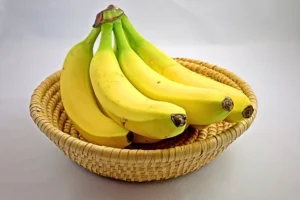
- Why Avoid: High in carbs and sugar. One medium banana has about 105 calories and 14 grams of sugar.
- Impact: Can quickly raise blood sugar and contribute to calorie surplus if not controlled.
- Intake Limit: Max 1 small banana per day, preferably pre- or post-workout.
2. Mangoes
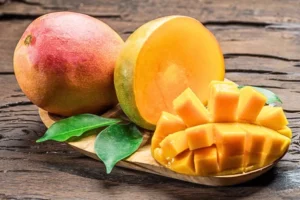
- Why Avoid: High in fructose. One mango contains around 45 grams of sugar and 200 calories.
- Impact: Can spike insulin, reduce fat oxidation, and increase fat storage.
- Intake Limit: ½ mango 2–3 times a week during weight loss phase.
3. Grapes
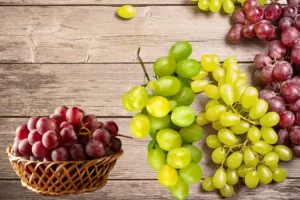
- Why Avoid: Small but calorie-dense. A cup of grapes has ~23g of sugar.
- Impact: Easy to overeat due to their size and sweetness, leading to excess sugar intake.
- Intake Limit: 10–12 grapes, not daily, ideally consumed with a protein source.
4. Cherries
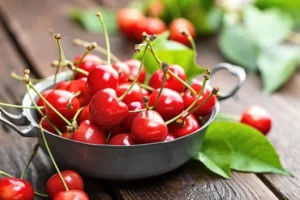
- Why Avoid: Cherries contain about 18 grams of sugar per cup.
- Impact: High glycemic load; not suitable for those with insulin resistance.
- Intake Limit: ½ cup, once or twice a week.
5. Lychees

- Why Avoid: Extremely high sugar content (29g per cup).
- Impact: Can cause insulin spikes and cravings, hampering weight control.
- Intake Limit: 3–4 lychees, occasionally.
6. Pineapples

- Why Avoid: Contains about 16 grams of sugar per cup.
- Impact: Medium to high glycemic index can cause blood sugar fluctuation.
- Intake Limit: ½ cup 2–3 times per week.
7. Dates
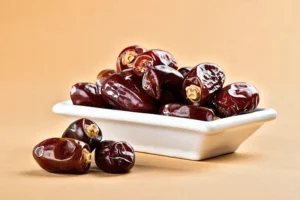
- Why Avoid: Extremely calorie-dense—1 Medjool date = ~66 calories.
- Impact: Just 3 dates = nearly 200 calories; easy to exceed limits.
- Intake Limit: 1–2 dates, not daily, best before workouts.
8. Figs
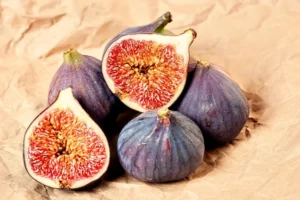
- Why Avoid: 1 large fig has about 50 calories and 10g of sugar.
- Impact: Dried figs even worse due to higher sugar concentration.
- Intake Limit: 1 small fresh fig or half a dried fig on rare occasions.
9. Dried Fruits (Raisins, Apricots, Prunes)
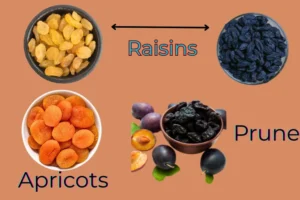
- Why Avoid: Dehydration removes water but concentrates sugar.
- Impact: High in calories and easy to overeat.
- Intake Limit: Strictly avoid or limit to 1 tablespoon occasionally.
🍬 3. Why These Fruits Hinder Weight Loss
A. High Sugar Content
Fruits like mangoes, bananas, and grapes are rich in natural sugars (mainly fructose), which can:
- Cause insulin spikes
- Trigger cravings
- Lead to fat storage
B. High Glycemic Load
Even if a fruit’s glycemic index is moderate, eating large quantities increases its glycemic load, leading to:
- Faster digestion
- Reduced satiety
- Blood sugar crashes
C. Calorie Density
Fruits such as bananas and dates pack more calories per gram, which adds up quickly in a calorie-controlled diet.
🧪 4. Scientific Backing: What Research Says
Several studies have explored how fruit consumption affects body weight:
- A 2016 study in Nutrients found that whole fruits help with weight loss when consumed in moderation but certain high-GI fruits may negatively affect insulin-sensitive individuals.
- A 2019 meta-analysis in The Journal of Obesity concluded that low-sugar fruits are more beneficial for weight management than high-sugar fruits.
🥗 5. Smart Fruit Choices for Weight Loss
If you’re trying to shed pounds, consider replacing high-sugar fruits with these low-sugar, low-calorie
options:
| Fruit | Sugar (per 100g) | Calories (per 100g) |
|---|---|---|
| Berries (Strawberries, Blueberries) | 4–7g | 32–57 |
| Watermelon | 6g | 30 |
| Papaya | 5.9g | 43 |
| Kiwi | 6g | 41 |
| Apple (with skin) | 10g | 52 |
| Pear | 9.8g | 57 |
⚖️ 6. Portion Control: How Much Is Too Much?
Here are general guidelines for fruit intake during weight loss:
- Total fruit servings per day: 1 to 2 small servings
- Timing: Best consumed in the morning or pre/post workout
- Combine with protein/fat: Helps slow down sugar absorption
Example Portion Sizes:
- 1 small apple
- 1 cup watermelon cubes
- ½ papaya
- ½ banana with peanut butter
- ¼ cup berries with Greek yogurt
🧘 7. Additional Tips to Eat Fruit During Weight Loss
- Avoid Fruit Juices: Even fresh ones spike blood sugar and lack fiber.
- Say No to Dried Fruits and Canned Fruits in Syrup: These are calorie bombs.
- Monitor Your Reactions: If you feel sluggish or bloated after certain fruits, avoid them.
- Eat Fruits as Snacks, Not Desserts: Don’t pair with sugary foods.
- Avoid Fruit-Based Smoothies with Additives: They often contain extra sugar or milk powders.
💡 8. Common Myths Around Fruit and Weight Loss
❌ Myth 1: All Fruits Are Good for Weight Loss
Truth: Some are better than others; moderation is key.
❌ Myth 2: You Can Eat Unlimited Fruits
Truth: Calories from fruits still count toward your daily intake.
❌ Myth 3: Fruit Sugar is Always Safe
Truth: Fructose, in excess, can still contribute to fat gain and insulin resistance.
📝 9. Sample Daily Fruit Plan for Weight Loss
Morning: 1 apple or 1 cup papaya
Midday Snack: 1 kiwi or ½ banana with 1 tbsp peanut butter
Dinner: No fruits (avoid sugar spikes before bed)
Total Fruit Intake: 2 servings (around 150–200 calories)
🚫 10. Final List of Fruits to Avoid or Limit During Weight Loss
| Fruit | Calories | Sugar | Intake Limit |
|---|---|---|---|
| Bananas | 105 | 14g | 1 small/day |
| Mangoes | 200 | 45g | ½ mango/2-3x week |
| Grapes | 104 | 23g | 10–12 grapes |
| Cherries | 87 | 18g | ½ cup/week |
| Lychees | 125 | 29g | 3–4/week |
| Pineapples | 82 | 16g | ½ cup/2–3x week |
| Dates | 66 (per piece) | 16g | 1–2 pieces/week |
| Figs | 50 | 10g | 1 fig/week |
| Dried Fruits | Very High | Very High | Strictly limit or avoid |
✅ Conclusion
While fruits are nutrient-dense and generally beneficial, not all fruits are ideal for weight loss. High-sugar, high-calorie options like mangoes, bananas, grapes, and dried fruits should be eaten in moderation or avoided. Instead, opt for low-sugar fruits like berries, papaya, and watermelon, and always practice portion control.
Weight loss is about balance, consistency, and smart food choices. Let fruits support your goals—not sabotage them.

